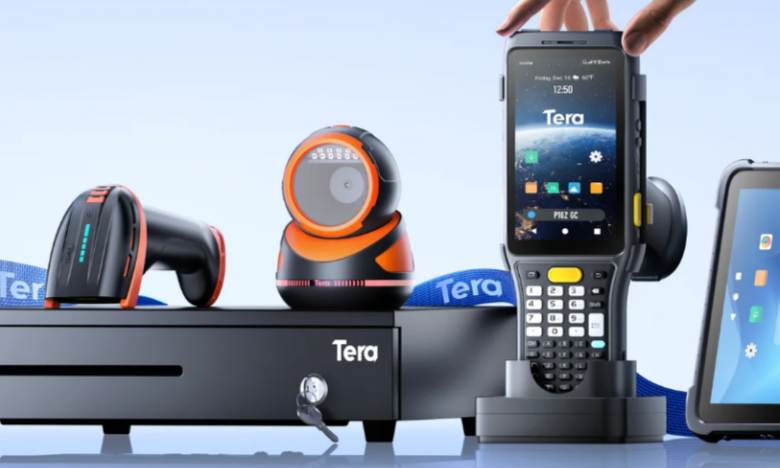Enhancing Point of Sale Operations with Advanced Scanning Technology

In a competitive retail landscape, the point of sale (POS) is a critical junction where sales are finalized and customer impressions are solidified. Traditional manual methods of handling transactions are often slow and susceptible to errors. These inefficiencies can lead to long customer queues, pricing mistakes, and inaccurate inventory data, ultimately impacting both revenue and customer loyalty.
Automating the checkout process with barcode scanning technology is a direct and effective solution. By replacing manual data entry with swift, automated scans, businesses can significantly increase their operational efficiency. This technology not only accelerates transactions but also ensures a high degree of accuracy, forming the foundation of a modern, streamlined, and customer-centric retail experience.
The Critical Role of Speed and Accuracy at the Point of Sale
The speed of service at checkout is a major factor in customer satisfaction. Lengthy wait times are a common source of frustration for shoppers and can deter them from returning. Barcode scanners fundamentally address this issue by dramatically cutting down transaction times. A simple scan is much faster than an employee manually searching for and entering product information into the POS system.
Equally important is the accuracy of each transaction. Manual entry increases the risk of human error, which can manifest as incorrect pricing or mismatched items. Such mistakes not only lead to financial losses but also erode customer trust. Automated scanning ensures that the correct product and price are registered every time, maintaining data integrity from the sale through to inventory management.
How Barcode Scanners Revolutionize POS Workflows
A barcode scanner operates by casting a light beam onto a barcode, reading the reflected pattern with a sensor, and converting that pattern into digital data. This information is then instantly sent to the connected POS system. This simple yet powerful process eliminates the need for manual keystrokes, transforming the checkout into a seamless and efficient workflow.
When an item is scanned, the POS system immediately retrieves the corresponding product details, including price and description. Simultaneously, the sale is logged, and the information is used to update inventory levels in real time. This automated, interconnected process ensures that business data remains current and reliable with minimal effort.
Core Benefits of Integrating Scanners into POS Systems
Boosted Operational Efficiency
One of the most immediate benefits of using barcode scanners is the boost in checkout speed. Faster transactions mean that more customers can be served in less time, which is especially valuable during peak business hours. This increased throughput helps reduce lines and improve the overall flow of the store.
Furthermore, the simplicity of scanning makes employee training much easier. New staff members can become proficient in using a scanner far more quickly than learning to navigate a complex POS interface for manual entry. This reduces training time and allows employees to focus more on customer engagement.
A New Standard for Data Accuracy
Automating data capture with barcode scanners significantly reduces the potential for costly errors. Scanning ensures that the price charged to the customer matches the price in the system, preventing overcharges or undercharges. This consistency is key to maintaining financial integrity and customer trust.
The accuracy extends beyond the transaction itself. Since each sale is recorded precisely, inventory records are updated correctly. This helps prevent stock discrepancies, reducing instances of stockouts on popular items or overstocking of slow-moving products.
Improved Customer Experience
A smooth and quick checkout process directly contributes to a positive customer experience. Shoppers appreciate efficient service that respects their time. By minimizing wait times, businesses can leave a lasting positive impression that encourages repeat business and fosters loyalty.
Accurate transactions also build confidence. Customers who know they will be charged correctly and that their desired products will be in stock are more likely to become regular patrons. Reliable operations powered by scanning technology are a key component of a dependable retail brand.
Tangible Cost Reductions
While there is an initial investment, barcode scanners deliver significant long-term cost savings. Improved efficiency may allow for better labor allocation, as fewer employees are needed to manage high-volume checkout lines. Preventing errors from manual entry also avoids direct financial losses.
Moreover, accurate inventory data helps optimize stock levels. Businesses can reduce the capital tied up in excess inventory and minimize losses from obsolete products. The combination of reduced labor costs, error prevention, and better inventory control leads to a healthier bottom line.
Selecting the Right Scanning Technology
Choosing the appropriate scanner depends on the specific needs of the POS environment. Different types of scanners offer distinct advantages for various retail settings.
Handheld Scanners
Handheld scanners offer great flexibility and are ideal for most retail environments. They allow employees to easily scan items of various sizes and shapes, including bulky products that cannot be placed on a counter. Wireless models provide even greater mobility for tasks like price checks or inventory counts away from the checkout.
Fixed-Position Scanners
Often called presentation scanners, these devices are mounted on the checkout counter. Employees can scan items by simply passing them over the scanner’s window, enabling hands-free operation. This type is perfect for high-volume environments like grocery or convenience stores, where speed is paramount.
Key Features to Consider
When selecting a scanner, compatibility with your existing POS system is crucial for seamless integration. Durability is also important, as the device must withstand the rigors of a busy retail environment. Finally, consider the scanning technology itself; a 2D imager can read both traditional 1D barcodes and 2D codes like QR codes, offering greater versatility for promotions or digital coupons.
Read Also: HR Tech Solutions for Small Businesses in the UAE
Driving Business Growth with Reliable Scanning Solutions
Ultimately, integrating barcode scanners is more than just an operational upgrade; it is a strategic investment in business growth. The efficiency, accuracy, and improved customer satisfaction delivered by this technology provide a strong foundation for scaling operations. As a business expands, a reliable scanning system can handle increasing transaction volumes without compromising service quality.
To achieve these benefits, dependable hardware is essential. For example, high-performance android barcode scanners are designed to meet the demands of modern POS systems, ensuring seamless integration and reliability. Investing in quality equipment ensures that your business can consistently leverage the advantages of automated data capture, supporting long-term success and competitiveness in a dynamic market.







